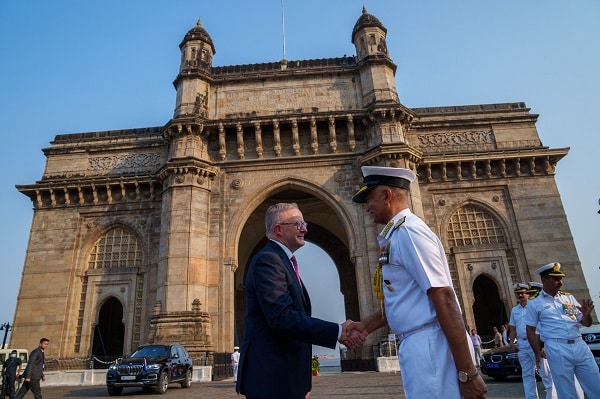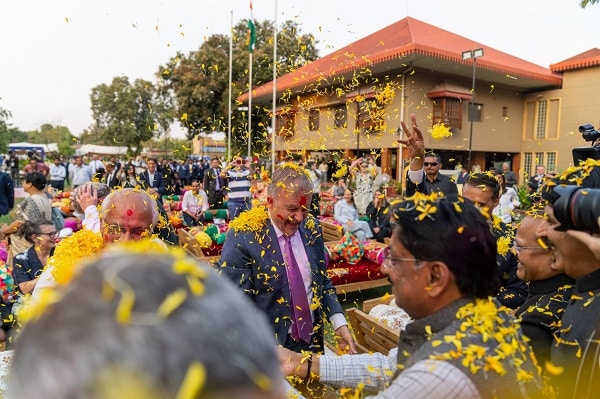Atithi Devo Bhava. This is an old Indian adage that Anthony Albanese has probably never heard. But on his first visit to India as Australian Prime Minister, he got to experience it in full measure.
Translated literally from Sanskrit, the term means “The guest is equivalent to God”. It comes from the ancient Hindu scripture Taittiriya Upanishad (6th century BC), and is a guideline for engaging with visitors: regardless of where they come from, or who they are, welcome them warmly and treat them with utmost respect.
Prime Minister Albanese’s visit to India was pivotal to setting up the agenda for the India-Australia partnership over the next decade. He and his Indian counterpart Narendra Modi are both likely to remain at their jobs for most of this decade, and from a strategic point of view, their chemistry needs to be right.
Indian PM Narendra Modi has shown himself to be an astute leader in international affairs, having walked the fine line of America under Donald Trump and America under Joe Biden, an independent stance against the European Union and their diplomatic war against Russia, a balance between the hairline politics of the Middle East, and success in neutralising the politics against Pakistan. That all this is happening against a backdrop of India’s emerging economic strength as it becomes the fifth largest economy in the world, adds weight to India’s international credentials.

Australian PM Albanese has been in the job for just under 10 months but has positioned himself as a strong and charismatic leader which has surprised many. After three years of COVID-caused virtual meetings, it was important that Australia engage favourably with India, increasing the momentum built by Scott Morrison and to a large extent Tony Abbot first as Prime Minister and then as special trade envoy.

This visit by PM Albanese had strong optics which clearly built on the narrative that both governments wanted to convey. Arriving on the day of Holi, a festival of colour and bonhomie, photos of PM Albanese showered with golden petals and the strategic Holi colours were plastered across all traditional and social media. Again, there’s nothing like the backdrop of giant warships and fighter jets to convey the impression of a strong and powerful leader. PM Albanese striding confidently on the deck of Indian warship INS Vikrant and headlines that he was the first foreign leader to do so, conveyed this message appropriately enough. Also the giant billboards of the two PMs showed the importance of this relationship, which was further on display as the two leaders took a friendship lap around the 132,000-capacity Modi stadium.

If pictures can tell a story, there are many to be told in these visuals.
The stories which did raise an eyebrow or two, included the omission of discussion around coal, which makes up 70% of the $24 billion trade between the two countries. With India’s unsatiable demand for coal and Australia’s commitment to a cleaner world, this topic warrants more debate. Also, many have criticised the need for a dictatorial-style sycophantic lap around the cricket ground: uncalled for, it has led to discussions on cult-type politics in India.
But what is a visit to India not without a controversy. India can both excite and frustrate.
Luckily, this time round, Albo’s visit was without doubt more of the former.
Read more: PM Albanese becomes first foreign PM to visit INS Vikrant




